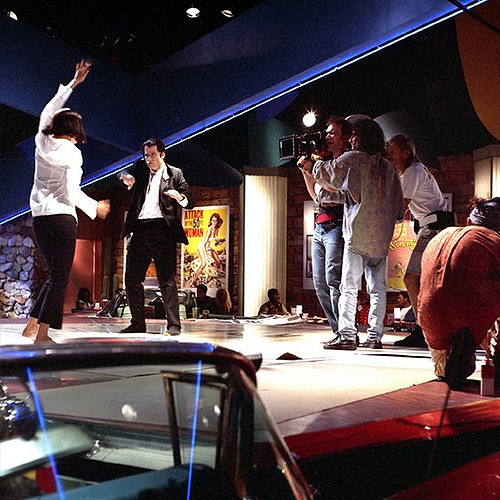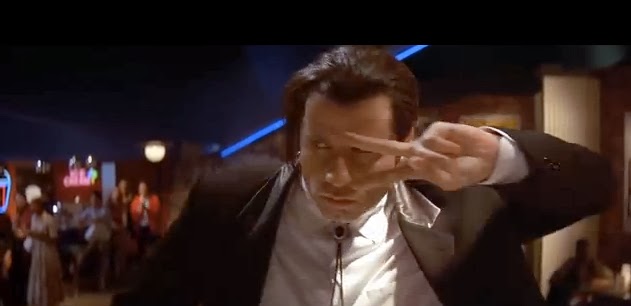
They do this as normally as they take hard drugs and kill people. All of a sudden, these two people stop a gangster reunion to hit the dance floor and twist together. The dance scene is particularly quirky on various levels. For example the conversation about fast food in foreign countries. The whole story goes back and forth from very violent situations to very common day to day stuff.

This scene is about constrast, as are lots of scenes in the movie. It appears to be the fact that the scene is so unusual and different from the rest of the movie, making it instantly memorable, coupled with the fact it was a revival of sorts for John Travolta, reminding the world of his dancing talents and evoking memories of his earlier role in Saturday Night Fever.Īs said in other answers, this question is hard to answer because it's open to subjective reasoning. So you can see a recurring pattern in all the comments. Let our Mob-boss boyfriend set us up with John Travolta any day. His smooth, understated twists toĬhuck Berry’s “You Never Can Tell” were so cool, we hardly noticed his But in 1994, Travolta made his comeback in Quentin Tarantino’s But in theġ980s Travolta’s career fizzled and we sort of forgot about himīecause - let’s be honest, here - we have pretty short attention His way to stardom in Saturday Night Fever and Grease. We already knew John Travolta could dance.
#PULP FICTION DANCE SCENE MOVIE#
Time Magazine listed the dance as one of their top 10 movie dance scenes ever, saying: Space that goes beyond stylistic allusion." In doing so makes it possible for the film to inhabit an affective To one that references the conventions of the classic film musical and Passage the film "briefly shifts from its habitually ironic discourse Loaded in to a single moment." She also argues that in this 'pastness' in which the stylistic signifiers of various decades are Performance inevitably references 'the seventies' and his appearance Sequence which evokes 'the sixties,' while Travolta's dance Simulacrum of a 'fifties' restaurant.the twist contest is a musical Is lost to us, and we're with Tony again.Įstella Tincknell notes that while the "diner setting seems to be a actual dance may beĬloser to the choreography of Anna Karina's shuffle with her twoīumbling gangster boyfriends in Bande à part, but even that reference Danielĭay-Lewis couldn't have woken such a powerful longing in us. White polyester suit, and enter the 2001 Odyssey club in Bay Ridge,īrooklyn, where he will dance for us and never, never stop. We keep waiting for him to shed his paunch, put on a Who has fallen out of favor, but still resides in our memory as the Travolta's entire career becomes "backstory", the myth of a movie star Presence is essential to the power of the scene, and of the film: Jerome Charyn argues that, beyond "all the better", Travolta's However, the fact Travolta is in the scene, especially given his performances in Saturday Night Fever, make it even more special.

That alone makes the scene both enticing and appealing, as it immediately stands out as being "out of place" in the film (and therefore memorable). Their bodies appear to get more and more into the routine, whilst their faces (and Uma Thurman's in particular) remain so expressionless. On top of that, their type of dancing is very peculiar. One minute we're watching these tough gangsters mixed up with drugs like cocaine and heroin and then all of a sudden - dancing! Out of nowhere. A fun, friendly and infectious dance scene that comes out of nowhere. Tarantino's comments show what he was aiming to achieve. Movie to have a musical sequence, makes it all the more sweet. And the fact that it's not a musical, but he's stopping the My favorite musical sequences have always been in Godard,īecause they just come out of nowhere. But the scene existed before John Travolta was cast.


According to the filmmaker,Įverybody thinks that I wrote this scene just to have John Travoltaĭancing. Manero in the epochal Saturday Night Fever (1977) Tarantino, however,Ĭredits a scene in the Jean-Luc Godard film Bande à part (1964) with Intended as a reference to Travolta's star-making performance as Tony Many have assumed that the dance sequence at Jack Rabbit Slim's was The first thing to note is that the scene was always meant to be in the movie, regardless of John Travolta's casting (as this article shows): The question isn't really answerable in that way and as such is only open to subjective reasoning. I'll attempt an answer to this question, but I warn you in advance that you're not going to get any single reason.


 0 kommentar(er)
0 kommentar(er)
